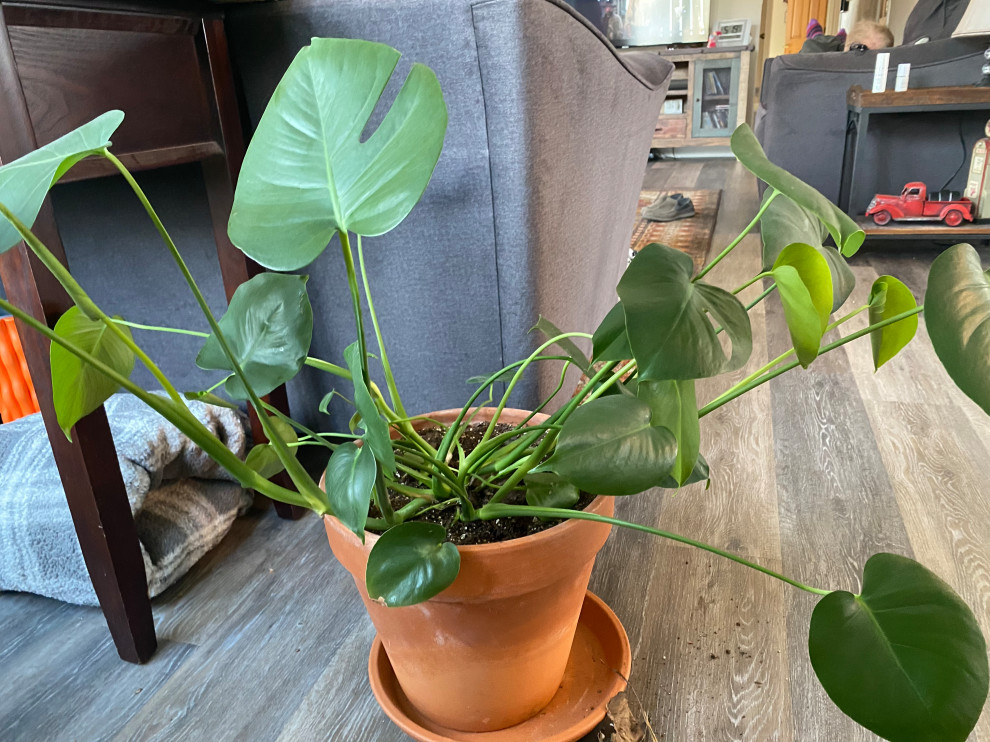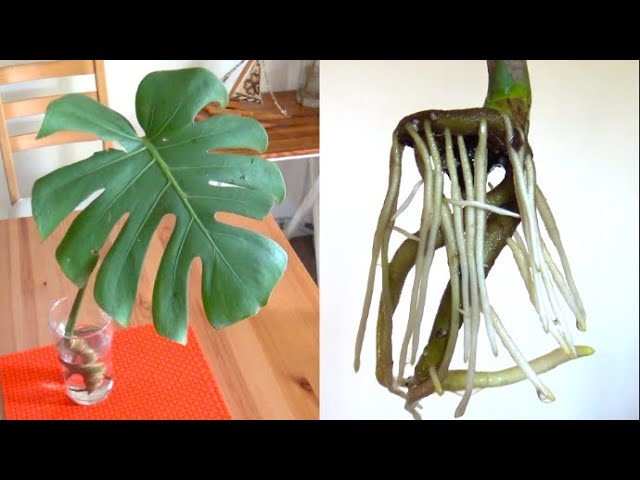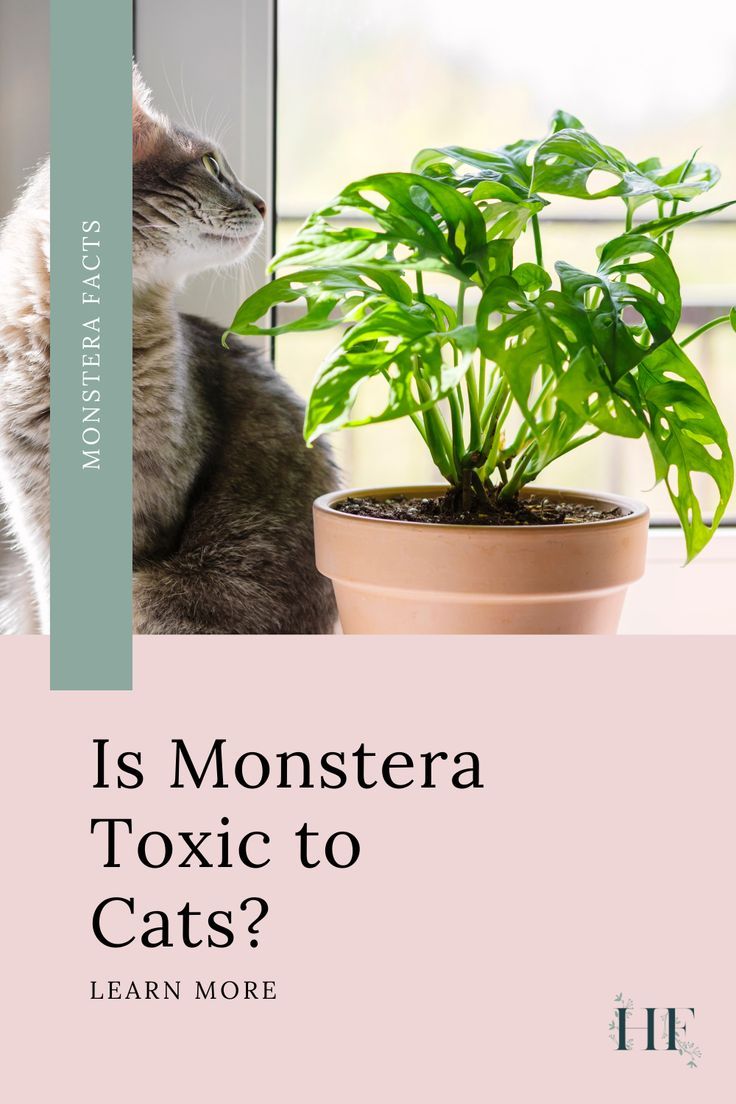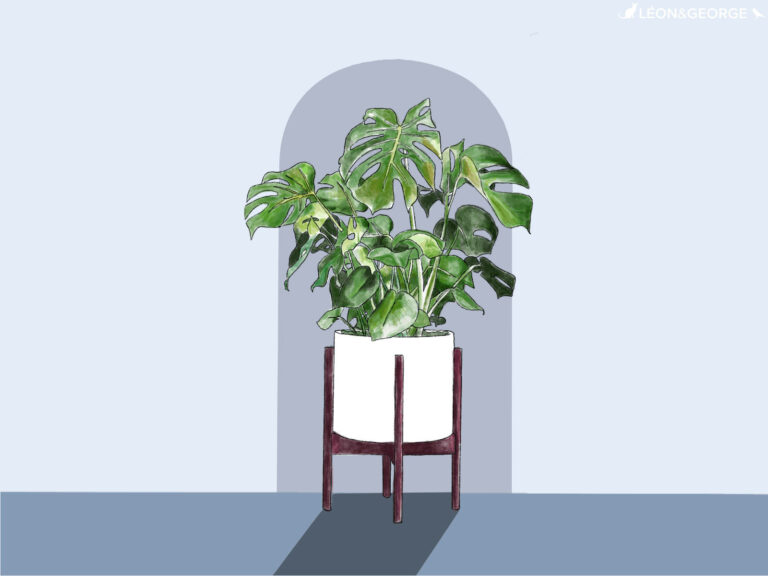Understanding Monstera Plant Drooping
Monstera plants are beloved for their striking and unique leaves, but sometimes these leaves can droop, signaling an issue that needs attention. Understanding the causes and signs of distress can help ensure a healthy, thriving Monstera.
Causes of Drooping Leaves
Several factors can cause the leaves of a Monstera plant to droop, and identifying the root of the problem is key to remedying it.
-
Watering Issues: Both overwatering and underwatering can lead to drooping leaves. Incredibly dry soil can cause leaves to go limp and brown (Bloomscape). On the other hand, overwatering can cause root rot, leading to wilting and drooping (Greg App).
-
Light Conditions: Inadequate light can also lead to drooping. Monstera plants need ample light for photosynthesis, which maintains their structural integrity. Insufficient light can weaken the plant, leading to drooping leaves.
-
Root Health: Root rot, often caused by overwatering, can lead to drooping stems and leaves. It’s important to check the soil’s moisture levels before watering to prevent this issue.
Signs of Distress in Monstera Plants
Recognizing the signs of distress in a Monstera plant can help you take corrective action before the problem becomes severe.
-
Limp and Brown Leaves: Leaves that become limp, droop, and eventually turn brown can be a sign of extremely dry soil or infrequent watering (Bloomscape).
-
Wilting Leaves: Wilting can occur from root rot due to overwatering or if the plant is thirsty. Always check soil moisture before making any adjustments (Greg App).
-
Drooping Stems and Leaves: Several factors can cause this, including improper watering, inadequate light, and root rot (Quora).
Given these causes and signs, it’s crucial to tailor care practices to meet the specific needs of your Monstera. For more detailed advice on water management, you can visit our guide on monstera plant watering. Additionally, understanding the light requirements is equally essential, and you can learn more about proper lighting in our article on monstera plant sunlight.
Watering and Soil Moisture
Proper hydration is essential for maintaining the health and vitality of Monstera plants. Understanding the right watering techniques and the effects of overwatering and underwatering can prevent issues such as leaf drooping which is a common concern.
Proper Watering Techniques
The key to keeping a Monstera plant happy is to water when the top 2”-3” of the soil are dry.
- Check Soil Moisture: Before watering, insert your finger into the soil up to the first knuckle to assess moisture levels.
- Watering Routine: Maintain a consistent schedule, adjusting frequency based on season and environmental conditions.
- Soaking Thoroughly: If the soil has dried out completely, give it a thorough soak to ensure even moisture distribution.
| Watering Aspect | Recommendation |
|---|---|
| Soil Dryness | Water when top 2”-3” are dry |
| Frequency | Consistent schedule |
| Thorough Soak | Necessary if soil is completely dry |
For more detailed guidance, explore our guide on monstera plant watering.
Effects of Overwatering and Underwatering
Both overwatering and underwatering are common issues that can cause Monstera plant drooping. It’s crucial to understand their specific effects and how to avoid them.
Overwatering Effects:
- Yellow Leaves: Indication of excessive moisture.
- Root Rot: Causes irreversible damage.
- Musty Smell: Sign of fungal growth.
Underwatering Effects:
- Limp Leaves: Indicator of dehydration and lack of turgor pressure (Gregarious).
- Dry Soil: Soil becomes compact and hydrophobic, making it difficult for water to penetrate.
- Brown Leaf Tips: Caused by dry air and soil.
| Condition | Symptoms | Prevention |
|---|---|---|
| Overwatering | Yellow leaves, root rot | Allow soil to dry out between waterings |
| Underwatering | Limp leaves, brown tips | Establish consistent watering schedule |
For more information on proper watering and its impacts, see our detailed articles on monstera plant care and monstera plant in water.
By carefully monitoring soil moisture and adjusting watering practices, one can keep their Monstera plant healthy and vibrant, avoiding the common pitfalls that lead to drooping leaves. Remember, proper hydration is just one aspect of maintaining optimal plant health, which involves balancing light, temperature, and support for your Monstera.
Light Requirements for Monstera Plants
Knowing the ideal light conditions for your Monstera is essential in preventing problems such as drooping leaves. Proper lighting not only supports the plant’s health but also enhances its distinctive fenestrations.
Ideal Lighting Conditions
Monstera plants thrive in bright but indirect sunlight. They require about 10-12 hours of filtered sunlight daily to maintain their unique leaf fenestrations. This specific lighting condition helps in promoting their growth and characteristic holes in the leaves. Direct sunlight should be avoided as it can lead to sunburned leaves, while insufficient light can result in stunted growth and other distress signs, contributing to plant drooping.
Adjusting Light Exposure Seasonally
Seasonal changes significantly influence the light exposure a Monstera receives. It is important to adjust the plant’s positioning and sometimes the environment, to ensure it gets the consistent light it needs throughout the year.
Winter
During winter, natural light availability decreases, which may necessitate moving your plant closer to a window to capture more light. Alternatively, using artificial light sources can help compensate for the reduced daylight. Failure to provide sufficient light in winter can result in your Monstera’s leaves drooping due to stress.
Summer
In summer months, avoid placing the Monstera in direct sunlight, as this can lead to leaf burn. Shielding the plant with sheer curtains or relocating it to a spot where it receives filtered sunlight is crucial. Too much direct sunlight can cause the leaves to lose moisture rapidly, resulting in drooping and potential damage.
| Season | Action |
|---|---|
| Winter | Move closer to window or use artificial light |
| Summer | Shield from direct sunlight |
| Spring/Fall | Gradual adjustment to changing light |
Spring and Fall
Spring and fall are transitional periods where the light levels gradually shift. During these times, it’s important to slowly adjust your Monstera’s positioning. In spring, move the plant to a brighter spot to adapt to the increasing sunlight. In fall, prepare it for less intense light by moving it to a slightly dimmer area.
By understanding the light requirements and adjusting exposure seasonally, you can prevent issues such as yellowing leaves, slow growth, and monstera plant drooping. This ensures your Monstera stays vibrant and healthy year-round. For more detailed information, check out our guide on monstera plant light requirements and related topics like monstera plant care and monstera plant watering.
Addressing Root Rot and Pest Infestations
One of the primary factors that can cause a Monstera plant to droop is root rot and pest infestations. Understanding how to tackle these issues can help restore and maintain the health of your Monstera plant.
Preventing Root Rot
Root rot is often the result of overwatering, which leads to the roots becoming waterlogged and unable to absorb oxygen. This condition is particularly detrimental to Monstera plants, leading to yellow leaves, a musty smell, and drooping stems (Greg App). Prevention is key when it comes to root rot.
Steps to prevent root rot:
- Proper Watering Routine: Allow the soil to dry out between waterings to avoid overwatering. Ensure the top 2 inches of soil are dry before watering again. For detailed watering techniques, visit our guide on monstera plant watering.
- Well-Draining Soil: Use soil with good drainage properties. This ensures excess water can escape, preventing the roots from sitting in water.
- Pot with Drainage Holes: Ensure your pot has adequate drainage holes to allow excess water to escape. For more information on choosing the right pot, see monstera plant pot.
Dealing with Common Pests
Monstera plants can also fall victim to various pests, which can cause leaves to droop and stems to weaken. Common pests include spider mites, mealybugs, and aphids. Addressing these pest issues promptly is vital for the health of your plant.
Strategies for dealing with pests:
- Regular Inspection: Routinely check your Monstera for signs of pests, such as small webs (spider mites), cotton-like clusters (mealybugs), or clusters of tiny insects (aphids).
- Natural Pesticides: Use natural pesticides such as neem oil or insecticidal soap to treat infestations. These products are less harmful to the plant and environmentally friendly.
- Isolation: Isolate infested plants from other houseplants to prevent the spread of pests.
Common symptoms and solutions:
| Pest | Symptoms | Solution |
|---|---|---|
| Spider Mites | Fine webbing, tiny dots on leaves | Neem oil spray |
| Mealybugs | Cotton-like clusters | Insecticidal soap, rubbing alcohol |
| Aphids | Clusters of tiny insects | Neem oil, ladybugs (natural predator) |
For more information on maintaining your Monstera’s health, read our articles on monstera plant bugs and maintaining optimal plant health.
By recognizing and addressing root rot and pest infestations early, you can help prevent your Monstera plant from drooping and ensure it remains healthy and vibrant.
Supporting Monstera Growth
Providing the proper support for your Monstera plant can significantly impact its health and aesthetic appeal. Using support structures and training techniques can help encourage vertical growth, preventing the plant from drooping.
Using Support Structures
There are various support structures available to help train your Monstera plant:
- U Cane Supports: These are excellent for offering stability to sprawling stems.
- Regular Bamboo Canes: Versatile and easy to insert into the soil, bamboo canes provide a strong base for your plant.
- Coco Coir Poles and Sphagnum Moss Poles: These natural supports are ideal for allowing aerial roots to latch on, creating a more stable plant overall (House Plant House).
To secure the Monstera plant to these supports, various types of ties can be used:
| Type of Tie | Features |
|---|---|
| Soft Ties | Gentle on stems, flexible |
| Regular Plant Wire | Strong, reusable |
| Elastic Bands and Velcro Rolls | Adjustable, secure |
| Repurposed Tights | Sustainable, soft |
When repotting your Monstera, place the support deep into the potting mix to ensure maximum stability. Adjust the plant and support structure regularly, especially after watering, due to the plant’s tendency to shift (House Plant House).
Training Monstera Plants
Training your Monstera involves guiding its growth around the chosen support structure. Here are some steps for effective training:
- Encourage New Growth: Train new stems by gently winding them around the support as they develop. For plants like Monstera adansonii, this can often be done without the need for ties.
- Prune Older Stems: If older stems grow at awkward angles, prune them. These pruned stems can be water propagated to create new plants or a fuller existing plant (House Plant House).
By following these techniques, you can create a fuller, more aesthetically pleasing plant. For more information on keeping your Monstera healthy, visit our articles on monstera plant growth and monstera plant repotting. These resources provide additional tips on ensuring your Monstera remains robust and vibrant.
Preventing and Addressing Drooping Leaves
Checking Soil Moisture Levels
One of the primary causes of monstera plant drooping is improper soil moisture levels. It’s crucial to maintain an optimal environment for the plant to thrive. Monitor the top 2”-3” of soil; if it’s dry, it’s time to water the plant (Bloomscape).
| Soil Condition | Action |
|---|---|
| Topsoil dry (2”-3”) | Water the plant thoroughly |
| Soil wet/musty smell | Allow soil to dry out before next watering |
Overwatering can lead to root rot, which manifests through yellow leaves and a musty smell (Greg App). Ensure water drains well and consider using a pot with adequate drainage holes.
For a precise approach, use a moisture meter to check soil conditions. This tool can prevent frequent errors in watering patterns, maintaining the plant in a healthy state.
Maintaining Optimal Plant Health
Maintaining optimal health for your Monstera involves more than just correct watering. Light, temperature, and pest control also play significant roles.
Light Requirements:
Monstera plants thrive in bright, indirect light. Too much direct sunlight can cause leaf burn, while too little light can lead to drooping leaves due to inadequate photosynthesis. For ideal light conditions, read monstera plant light requirements.
Temperature:
Monstera plants prefer a stable, warm, and humid environment. Drastic temperature changes can stress the plant, leading to droopiness. Aim to keep the temperature between 65-80°F (18-27°C). Check out our article on monstera plant temperature for more details.
Pest Control:
Common pests such as spider mites, scale, and mealybugs can affect Monstera plants. Regularly inspect for pests and treat them promptly. For detailed tips, visit monstera plant bugs.
Nutrient Needs:
Fertilize your Monstera every 4-6 weeks during the growing season with a balanced, water-soluble fertilizer to support robust growth. Avoid over-fertilizing, as this can cause leaf discoloration and drooping.
Support Structures:
Monstera plants are climbers and often need support as they grow. Using support structures can prevent stems from drooping and provide better air circulation, reducing the chances of fungal issues.
| Aspect | Optimal Conditions |
|---|---|
| Light | Bright, indirect sunlight |
| Temperature | 65-80°F (18-27°C) |
| Humidity | High humidity levels |
| Nutrients | Balanced fertilizer every 4-6 weeks |
Ensuring these factors are consistently met will help your Monstera thrive, thereby preventing drooping leaves born out of stress or improper care. For more information on general Monstera plant care, refer to monstera plant care.




